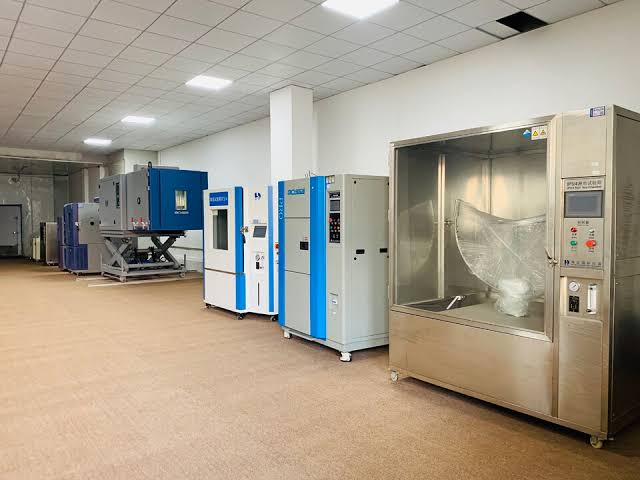The Food industry needs to guarantee product quality and food safety. Temperature control is the main aspect of food testing whereby an understanding of how the product under test behaves under different environmental conditions is determined.
In this process, temperature and humidity chambers, commonly called stability chambers, find their application. They mimic various conditions surrounding the products, thus helping a manufacturer determine the products’ stable shelf life and whether they meet the country’s required standards.
The Role of Temperature and Humidity Chambers
Food products are very vulnerable to environmental factors. Fluctuations in the climate change of temperatures and relative humidity may also influence the texture, taste, nutrient composition, and shelf life of any packaged product.
Temperature and humidity chambers offer an opportunity to investigate these impacts in a well-defined manner. It is possible to recreate certain conditions in the laboratory to understand their effects on products, for instance, during storage, transportation, or even usage by the client.
These chambers are useful in ensuring foodstuffs conform to highly rigorous quality assurance and safety measures. For instance, dairy products, frozen foods, and similar products, including baked goods, are tested for stability within stability chambers to determine their performances under changing temperature systems and humidity. Such testing identifies the areas of concern that may cause defects that reduce product quality and pose a cross to consumer satisfaction and regulatory compliance.
Key Features of Stability Chambers
Stability chambers should be regulated to provide a controlled environment where the stability of products is to be determined. Some key features include:
Temperature Control: These stability chamber temperature and humidity chambers offer countless environmental controls, varying low temperatures to hot environments. With this flexibility, they can test for different categories of products, for instance, frozen foods or even canned foods.
Humidity Control: Stability chambers can also control humidity, which requires studying changes in food products due to moisture. High humidity might lead to spoilage and low – dehydration, besides altering the texture of foods and other goods.
Consistency: Today, we have the stability chambers, which will give the right temperature and humidity throughout the test. This consistency, however, is important to achieve high reliability and repeatability of the results.
Programmable Settings: Some chambers boast of notifying controls whereby they can program one complicated testing cycle. For instance, a manufacturing process can mimic the day-night shift of temperatures or monthly humidity conditions.
Applications in Food Testing
Due to the flexibility in terms of temperature and humidity control control, the chambers are vital in food tests. Some common applications include:
Shelf-Life Testing: Stability chambers determine the conditions over which a product remains safe for consumption. When aging is controlled, the speed at which it occurs can be controlled, and the manufacturers can identify shelf life and the appropriate conditions that the product should undergo.
Packaging Validation: It is evident that the packaging process offers an essential safeguard to food from factors that could affect the environment. Chambers with constant temperature and humidity chamber allow for the evaluation of the perspectives of packaging materials by applying the necessary conditions.
Product Development: During the development phase, food scientists employ these chambers to determine how new formulations and adjective ingredients would affect consumers. Studying a product’s dynamic behavior helps minimize losses and maximize gains before series production.
Regulatory Compliance: It has been traditional for many regulatory bodies worldwide to demand proof that the products manufactured for human consumption by the food industry have appropriate stability as anticipated under conditions as stipulated. Such conditions can be produced in stability chambers that meet the above requirements.
Importance of Constant Temperature and Humidity
Temperature and humidity fluctuations can interfere with results; thus, testing should be done under constant conditions. The variability enables the distinction of changes, but variability arising from changes in environmental conditions may skew results and make it difficult to pinpoint a specific measure with certainty. Today’s stability chambers have insensitive sensors and sophisticated control systems to avoid such errors.
For example, during an investigation on chocolate, a product that is very much affected by temperature and humidity, a stable temperature and humidity storage chamber is highly recommended for product quality maintenance while in storage. Likewise, in dehydrated foods, a stable condition is necessary to avoid rehydration or spoilage that may, in some way, affect the product’s quality.
Choosing the Right Chamber
The temperature and humidity chamber use rely on factors such as the type of food product, testing needed, and compliance standards. Manufacturers should consider chambers with small variations of temperature and humidity, which are energy savages and can be strongly built for the best results.
Conclusion
Temperature and humidity chambers are essential in carrying out food tests. By providing a controlled environment, these chambers aid manufacturers control product quality, safety, and standards. It is also praiseworthy that the technique allows for setting the conditions needed during research for shelf life, package integrity, or product stability. However, New technologies have made the stability chamber accurate in its deliveries, effectively making the food industry meet consumers’ and regulatory authorities’ requirements.
